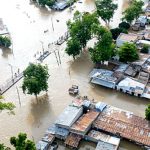The Federal Government has launched a comprehensive investigation into the causes of the recent earth tremors that shook the Mpape area in Abuja on September 16, 2024.
The tremors, which occurred late at night, caused significant alarm among residents, with six to eight seismic events reported between 11:00 p.m. and midnight.
During a press briefing, the Minister of Science, Technology, and Innovation, Uche Nnaji, assured the public that experts from the Centre for Geodesy and Geodynamics, an arm of the National Space Research and Development Agency (NASRDA), are currently analyzing the seismic data using advanced earthquake analysis tools. The goal is to determine the underlying causes and provide insights into possible preventive measures.
The tremors were first detected around 11:00 p.m., with the main seismic event happening at 11:18:37 p.m., registering a magnitude of 3.1 at a focal depth of 11 kilometers. According to data from seismographs, there were three foreshocks and three aftershocks, which added to the anxiety of the Mpape residents.
SEE THIS: FG Issues Urgent Flood Warning As Cameroon Releases Water From Lagdo Dam
While there is speculation that the tremors might be linked to the reactivation of underground faults in the Mpape area, Nnaji emphasized that these tremors are not unprecedented. He referred to a similar series of tremors that struck the same region in 2018. Although the recent seismic activities have understandably caused concern, the minister urged residents to remain calm as NASRDA and the government are actively monitoring the situation. He further mentioned that comprehensive data from seismic and GNSS (Global Navigation Satellite System) stations are being analyzed to ensure a thorough understanding and mitigation of the situation.
In addition to addressing the earth tremors, Nnaji also raised concerns about imminent flood risks in southern Nigeria due to the overflow of the Lagdo Dam in Cameroon. By mid-September, the dam overflow had already affected over 18,737 hectares of land, posing serious threats to nearby communities. The government, he said, is working closely with international agencies and deploying satellite technology to monitor the situation. Residents in flood-prone areas are urged to stay vigilant and heed early warnings.
The government’s proactive stance on these twin environmental threats highlights its commitment to safeguarding citizens and developing preventive measures against future risks. NASRDA, in particular, is playing a key role in analyzing real-time data to support timely responses to the evolving seismic and flood situations.









